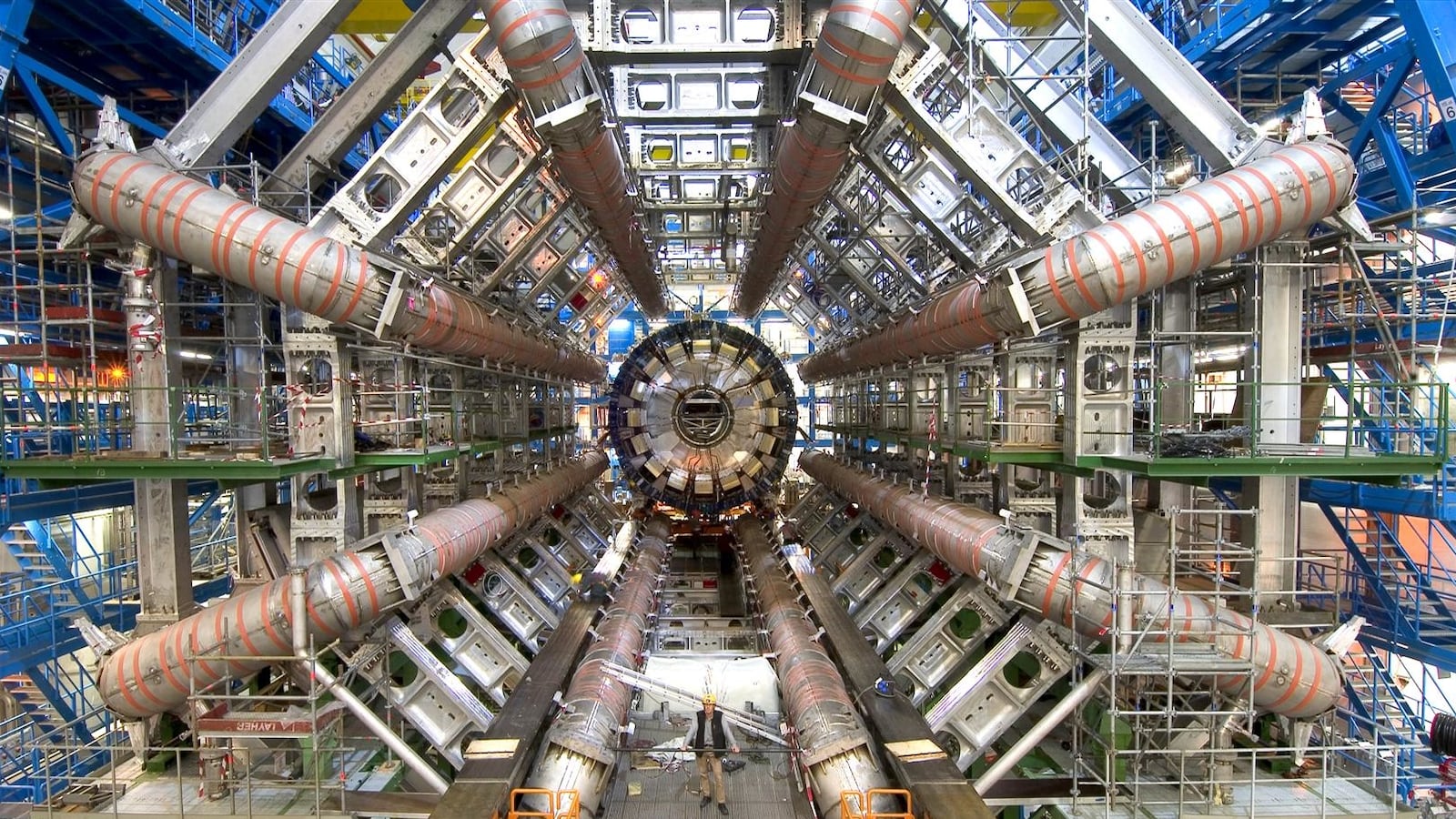The Large Hadron Collider, the world’s most powerful particle accelerator, powered up again on Friday morning—and scientists believe it’s ready to discover some of the biggest mysteries in the universe.
The massive, atom-smashing machine has been quiet in the past three years. During this time, scientists made some major upgrades at the LHC’s site beneath the French-Swiss border. Researchers once hoped that the 27-kilometer-long particle accelerator would unveil some of the biggest mysteries in science such as the existence of dark matter—but aside from the momentous discovery of the Higgs Boson, a subatomic particle that gives mass to other particles, there hasn’t been much else to write home about.
That’s why researchers upgraded the accelerator’s Atlas and Compact Muon Solenoid (CMS) detectors—instruments used to measure and analyze particles made by the LHC. With the improvements, scientists believe it might now reveal a number of very exciting and potentially unexpected discoveries.
“It is going to be two to three times better, in terms of the ability for our experiment to detect, collect and analyze data,” Marcella Bona, a senior research fellow of particle physics at CERN, the organization that runs the LHC, told the BBC. “The whole experimental chain has been upgraded.”
To understand what CERN scientists hope to find, you need to first wrap your mind around the Standard Model, a theory of physics that explains how subatomic particles create atoms and, therefore, all matter around us. The Model helps explain three of four forces in nature: electromagnetism, and the two types of nuclear forces that hold atoms together.
However, it doesn’t explain the fourth force of gravity, and it doesn’t explain the theoretical, invisible material that makes up 95 percent of the universe: dark matter. While researchers know that these particles exist, they have yet to prove its existence or really understand what it really is. These are the questions that the scientists hope the upgrades will help answer.
Along with uncovering the mysteries of dark matter, the LHC is now better primed to look into whether or not there’s a fifth force of nature called dark energy. Researchers believe that the force likely exists because of how it impacts the way the universe expands. However, like dark matter, they’ve been unable to confirm its existence or observe it directly. Sam Harper, a physicist researching the theoretical force using the CMS detector, is hoping to finally find some answers
With the upgrades, the team might be on the verge of discovering the fifth force. “I've been hunting for the fifth force for as long as I've been a particle physicist,” Harper told the BBC. “Maybe this is the year.
“This would upend the field,” he said. “It would be the biggest discovery of the LHC.” He later added that, “it’ll be bigger than the Higgs."
Now the LHC gets to make up for lost time in a potentially big and game-changing way. While exciting, the scientists are understandably nervous about restarting operations. Rende Steerenberg, who is a part of the control room operations team at the LHC, told Reuters that restarting the accelerator “comes with a certain sense of tension, nervousness.” After all, what if they miss something? Or what if the upgrades aren’t sufficient to make the discoveries they hope to find?
Still, there’s a whole universe of possibilities to get excited about.
“The thing that drives all particle physicists is that we want to discover the unknown,” Harper said to the BBC, “and this is why things like the fifth force and dark matter are so exciting because we have no idea what it could be or if it exists and we really want to find this out.”








